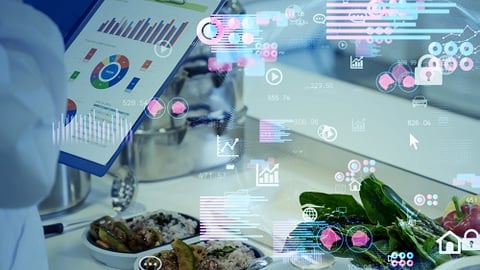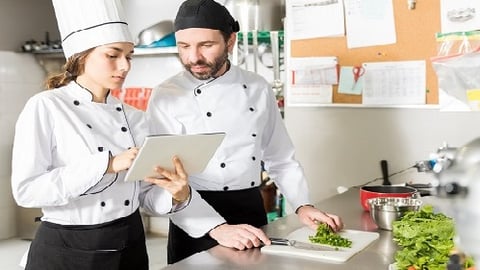RTN Market Watch: Industry Insiders Dish on Consumer Behavior, Restaurant Challenges, What’s Working & What’s Next
Today’s consumers increasingly prioritize convenience. Fueled by online ordering and slick mobile apps with integrated loyalty, off-premises dining has become an integral part of consumers’ lifestyles. In fact, 72% of millennials and 66% of Gen Z adults say purchasing takeout or delivery is essential to the way they live, according to the National Restaurant Association's 2022 State of the Restaurant Industry report.
“Consumers are enjoying the new, easier and faster ordering, pickup and delivery experiences,” notes David Gosman, Global Industry Lead - Hospitality, HP. “In short, convenience is the new experience. For restaurants, this modified behavior is raising the bar of their technology investments – a shift from temporary pandemic modifications to permanent, repeatable change.”
Whether on- or off-premises, “Consumers expect more from restaurants than they once did,” adds Amesha Tate-Thomas, Marketing Manager, Rosnet. “From cleanliness to ease of ordering and paying, restaurants have to visibly display what measures they are taking.”
Changing Consumer Behavior
& What it Means for Restaurants Post-Pandemic
The pandemic — combined with increased consumer demand for convenience — continues to impact restaurant operations, says Tom Seeker, CIO, Earl Enterprises. Delivery, ghost kitchens and virtual brands have caused “a major shift in every aspect of restaurant operations.”
“Customers have demanded the same great food but delivered to their homes, or the ability to pick the food up with little to no contact via curbside, or new services like secure food lockers or kiosks,” says Seeker.
Digital expectations have increased as well. These past two years, consumers have embraced in-app and online ordering and are more digitally-savvy as a result, notes Mark Mullinax, Sr. Consultant, ConsultR. “Consumers are more aware and critical of the user experience and order accuracy. This is driving brands to invest more in technology to increase customer retention,” Mullinax explains.
The competition among restaurants remains fierce. Smart restaurants are putting their data to work for them, using it to create targeted, personalized offers to drive repeat business. “We foresee consumers driving hyper-personalization when eating away from home. Just like CPG brands know who their customer is from previous purchases, restaurants will need to know who their customer is before they walk in the door,” says Lucy Logan, CEO of FoodCalc.
RTN Market Watch
RTN Market Watch, exclusive to Hospitality Technology, features thought leaders from the Restaurant Technology Network (RTN) community and their insights on what’s hot now and where the restaurant technology industry is headed. This edition: Consumer behavior post-pandemic and its impact on operators.
In today’s digitally-driven world, “Consumers have higher expectations for convenience and service,” notes Alan Hayman, Founder and President of Hayman Consulting Group. “In addition, inflationary pressures, coupled with third-party premium pricing/fees, are causing consumers to think twice about value than they have in the past. Operators will need to cope with all these issues. Running restaurants has never been harder.”
What’s Working Now
“Off-premises ordering continues to hold strong, solidifying the technologies and investments we thought were only going to be short-lived,” notes Skip Kimpel, Senior Consultant, ConStrata.
Restaurants and consumers alike have embraced mobile apps and online ordering to power off-premises dining options. “Fast and frictionless ordering platforms,” are becoming table stakes, adds Rosnet’s Tate-Thomas.
Connected devices are commonplace. Earl Enterprises’ Seeker cites some statistics that bear repeating: “Eighty-four percent of U.S. households have at least one smartphone or device. 78% have a laptop or computer with internet access,” he says. “The ability to choose a restaurant, pick any option you want, pay for it, and have it brought to you in just a few gestures is now the new norm.”
These devices are easy to use for young and old consumers alike. “Utilizing these tools and services are as easy as changing channels on a TV,” Seeker explains.
Ditto for mobile apps. “For the most part, most of the first- and third-party apps are easy to use,” Mullinax adds. “Some have a better user experience than others and more payment options.”
When it comes to UX, there’s room for improvement. Restaurants should pay attention to what’s working well in other sectors, especially retail. “Amazon’s search and filtering with ratings is a great user experience. In foodservice, I think we're just scratching at the surface for solutions that enable consumers to have the same experience you get when shopping online for apparel, cosmetics, housing, etc.,” says FoodCalc’s Logan.
Smartphones are increasingly consumers’ device of choice, and mobile apps are great for driving loyalty, but they are limited to guests that have the app, adds HP’s Gosman. And many consumers don’t want to download apps they use occasionally.
“Restaurant kiosks have actually been a great success story — for semi-frequent diners, or those that prefer to not use their own for phones to order. The availability and ease of use of in-restaurant kiosks for menu exploration, ordering and payment has much improved and provides a great experience,” said Gosman.
Contactless ordering and payment solutions are popular with loyal and new customers alike.
Off-Prem Opportunities
Off-premises ordering will continue to be sought-after by today’s convenience-driven consumer. Some of the industry insiders interviewed by HT are foreseeing a drop in delivery coinciding with an increase in carryout, curbside and drive-thru.
“As gas prices continue to rise, consumers will likely shy away from third-party delivery services to avoid fees and surcharges. Instead, they will opt for carryout and curbside, and restaurants with easy-to-use, guest-facing systems will benefit the most,” advises Rosnet’s Tate-Thomas.
Kimpel agrees. “Guests are more sensitive to higher fees when economic times are tough, and the growth of the pickup portion of the guest experience will continue to get better.”
Case in point: the increasing number of vendors in the food locker space. “Technology is really improving around getting timely notifications to the guest resulting in a better food experience,” Kimpel says.






